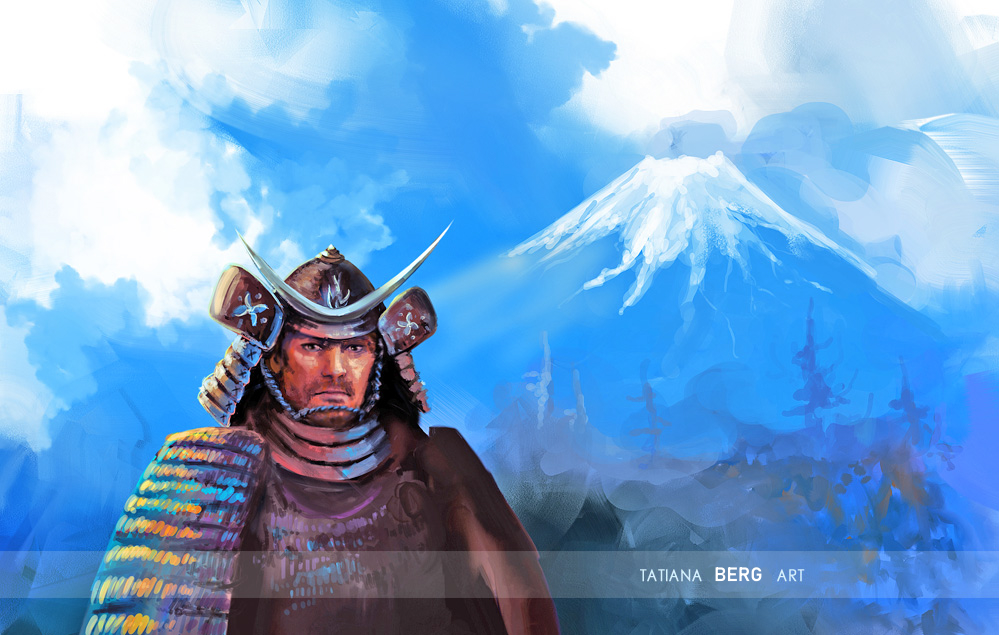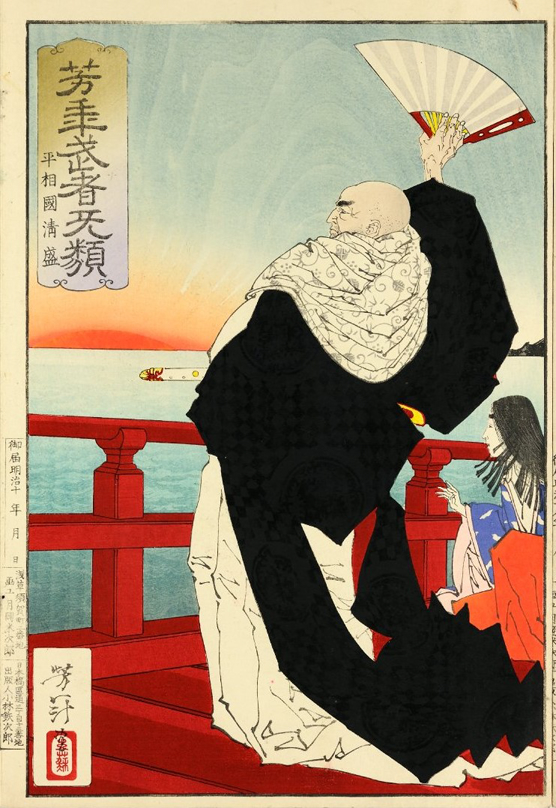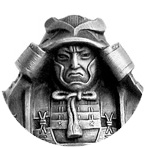The Great War Between the Taira and Minamoto Clans
samurai history
-
The Jetavana Temple bells
ring the passing of all things,
Twinned sal trees, white in full flower,
declare the Great Man’s certain fall.
The arrogant do not long endure:
They are like a dream one night in spring.
The bold and brave perish in the end:
They are as dust before the wind
—The Heike MonogatariIn 1180, the brave and impulsive Prince Mochihito led the assault against Kyomori who rose to the occasion using his vast experience of thwarting plots. His secret service didn’t give Mochihito a chance to assemble a large force and he was chased out by Kiyomori’s warriors. Like with Yoshimoto, many loyal samurai fell trying to save the Prince who died while waiting for reinforcements.
The heroism of the Prince’s knights is vividly described in an early medieval Japanese chivalresque epic, The Heike Monogatari:
“Another of the soldier priests, Tsutsui-no-Joinyo Meishu, wearing armor laced with black leather over a hitatare of dyed cloth, and a helmet of five plates, a sword in a black lacquered sheath at his side and a quiver of twenty-four black feathered arrows on his back, his bow being also of black lacquer, gripping his favorite white handled halberd in his hand, also sprang forward alone on to the bridge and shouted in a mighty voice: ‘Let those at a distance listen, those that are near can see; I am Tsutsui Jomyo Meishu, the priest; who is there in Miidera who does not know me, a warrior worth a thousand men? Come on anyone who thinks himself someone, and we will see!’ And loosing off his twenty-four arrows like lightning flashes he slew twelve of the Heike soldiers and wounded eleven more. One arrow yet remained in his quiver, but, flinging away his bow, he stripped off his quiver and threw that after it, cast off his foot gear, and springing barefoot onto the beams of the bridge, he strode across. All were afraid to cross over, but he walked the broken bridge as one who walks along the street Ichijo or Nijo of the Capital. With his naginata he mows down five of the enemy, but with the sixth the halberd snaps asunder in the midst and flinging it away he draws his tachi, wielding it in the zig-zag style, the interlacing, cross, reversed dragonfly, waterwheel, and eight-sides-at-once styles of fencing, and cutting down eight men; but as he brought down the ninth with an exceeding mighty blow on the helmet, the blade snapped at the hilt and fell splash into the water beneath. Then seizing his dirk which was the only weapon he had left, he plied it as one in the death fury. Now a retainer of Joen-bo-no-Ajari Kyoshu, Ichirai Hoshi by name, a man of great strength and courage, was fighting behind Jomyo, but as the beams were so narrow he could not come alongside him, so placing a hand on the neckpiece of his helmet, he shouted: ‘Pardon me Jomyo, this is no good,’ and springing over his shoulder to the front fought mightily until he fell. Ichirai Hoshi being killed, Jomyo-bo crawled back again and retired to the Byodo-in, where he sat down on the grass before the gate, and stripping off his armor, counted the dints of the mows that had struck him. There were sixty-three in all, but of these only five had pierced through, and none of the wounds being very severe, he treated them with cautery; then, covering his head and changing his clothes, using his broken bow as a staff he went down on foot to Nara.”

Ascension by T. Berg (print & painting) || All Artwork
The Taira won again. This time Kiyomori and his older son Shigemori, now head of the clan, decided to completely annihilate the Minamoto who they considered the root of all evil and the greatest threat to their dominance. The decisive phase of battle began when Kiyomori sent his squadrons to the Minamoto’s eastern provinces. Even though the Taira had the advantage and the Ainu were still pressuring them, the Minamoto were genuine samurai; back to back misfortunes did not break their will. They made it rock-solid. And after being without a leader for a long time, they finally got one — Minamoto Yoritomo.
An intrepid young man once spared by Taira Kiyomori, Yoritomo became an unyielding warrior, as brave and cunning as his father.
Taira Kiyomori by Tsukioka YoshitoshiWhen the civil war broke out, he proved to be an even more dangerous opponent than the late Yoshitomo was. He was ready. He had been calling on his father’s spirit in a Shinto shrine every day and had pleaded with the gods and spirits of his ancestors to give him strength to carry out his revenge, “Everyone with the name of Taira shall cease to exist. They shall pay for having thrown my family into turmoil and trying to annihilate it. Help me, father, teach me everything our family knew!” Yoritomo’s requests were answered. He was resolute, lightning-fast, cautious, and as deceitful as a fox. Furthermore, he was granted the wisdom of his ancestors which made him capable of always finding a way out of trouble.
His right-hand man was his half-brother, the legendary knight Yoshitsune who became a kind of Japanese Robin Hood, a popular figure in songs and folk tales. He had survived thanks to his mother; in early childhood he was exiled to a monastery far from home. Yoshitsune escaped as soon as he could and went to live with a distant relative from the Minamoto clan, an old samurai who taught his talented disciple many things. Despite his small height, Yoshitsune not only possessed enormous physical strength and quickness but also inner strength. It was obvious that he had the magnetism of a great leader.
After mastering the art of war, Yoshitsune led the life of a knight-errant and lived in the forest. There, he met his closest and most loyal friend, the wandering monk and adventurer Benkei — a huge, disheveled, bear-like man who was no stranger to the bottle and to brawling. Legend has it that he had made a vow to take a thousand swords from duels and dedicate them to his saint. So he challenged everyone he came across and managed to collect 999 swords. When he met Yoshitsune, Benkei thought that he was about to have his thousandth victory and fulfill his vow. But he had never met such a great swordsman... read further in the bookBack to the Blog
This is part of a chapter from Samurai: Ascension by A. R. Berg

